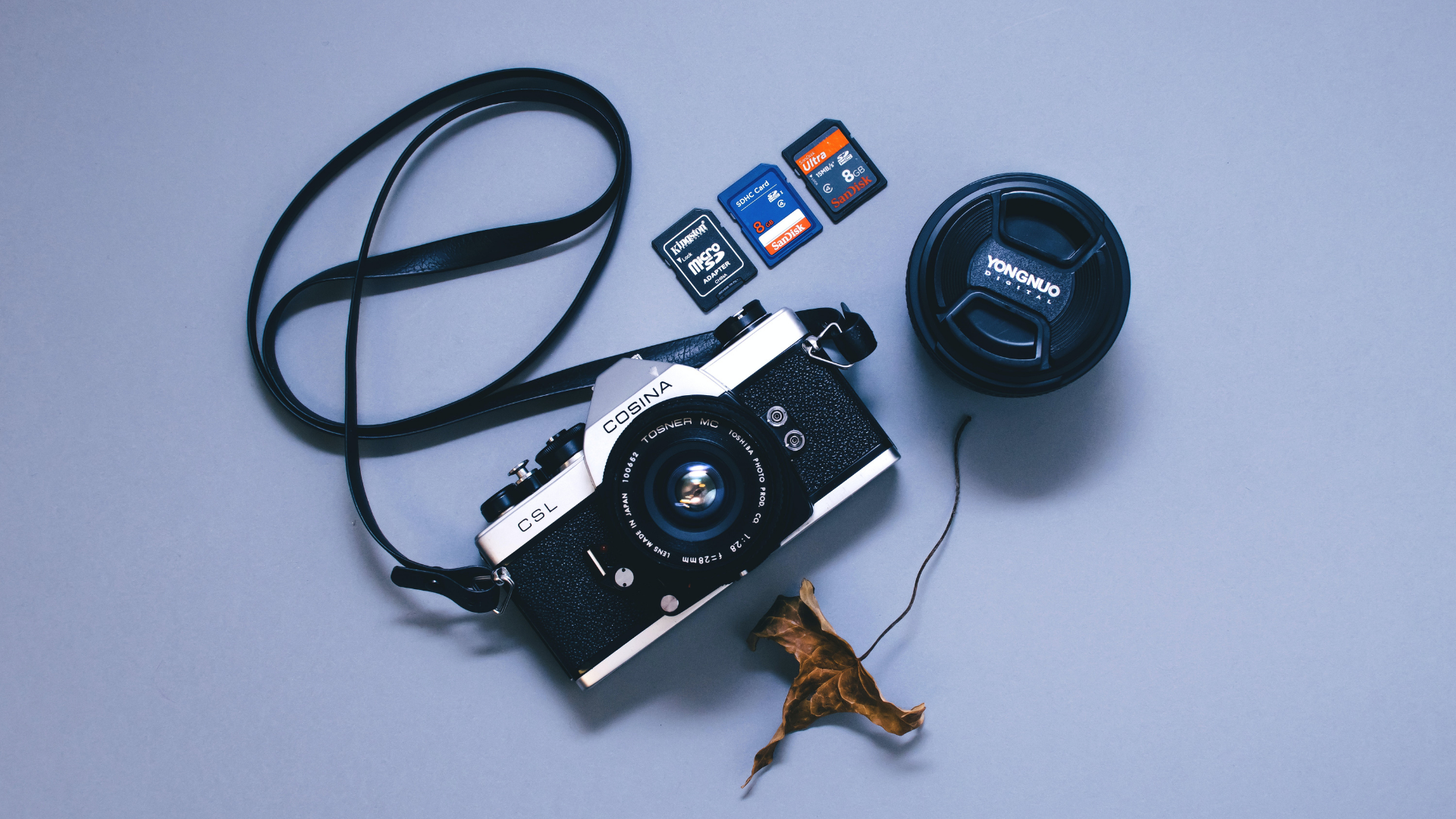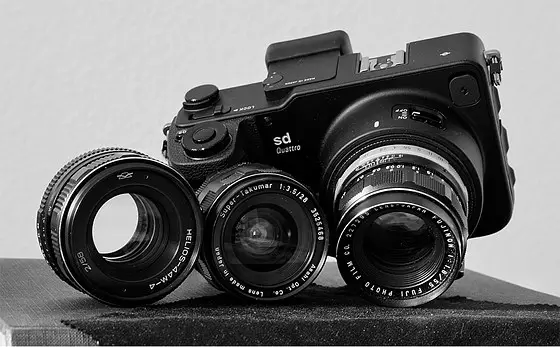
Pentax 67 165mm vs 200mm Lenses: A Complete Comparison
As an Amazon Associate, I earn from qualifying purchases.
The Pentax 67 165mm and the 200mm lenses both are telephoto lenses. But there are some significant differences between them. For aspiring photographers, it is very confusing to choose the right telephoto lens.
This article will help you to choose the right one based on your needs and show you the differences between Pentax 67 165mm vs 200mm.
Pentax 67 165mm vs 200mm: Quick Comparison Table
| Features | Pentax 67 165mm | Pentax 67 200mm |
| Focal length | 165mm | 200mm |
| Weight | 0.84kg | 0.80kg |
| Aperture | f/2.8 ~ 22 | f/4 ~32 |
| Optical formula | 6 elements, 5 groups | 5 elements, 4 groups |
| Filter | 67mm | 77mm |
| Dimensions | 92×99mm | 92.5mm |
What Are the Major Differences Between Pentax 67 165mm vs. 200mm?
The Pentax 67 165mm lens is a medium telephoto lens, which is great for portraits and other medium-distance subjects. The 200mm lens is a longer telephoto lens, which is better suited for subjects that are farther away, such as wildlife or sports.
Both lenses are high-quality, but the 200mm lens will give you a longer reach and shallower depth of field. The 165mm lens will offer a wider field of view and slightly more depth of field. It depends on what you plan on using the lens for.
The main difference between these two is the focal length, with the 165mm having a slightly wider angle of view than the 200mm. The 200mm lens will have a narrower angle of view but will provide more magnification and a shallower depth of field.
The 200mm lens may also be more suitable for capturing subjects at a distance, while the 165mm lens may be more versatile for a variety of subjects and situations. Additionally, a 200mm lens is a bit heavier and larger than 165mm.
Here are the major differences between Pentax 67 165mm vs 200mm:
Focal length:
The main difference between the focal length of the Pentax 67 165mm and 200mm lenses is the angle of view they provide.
The 165mm lens has a slightly wider angle of view than the 200mm lens. This means that the 200mm lens will provide more magnification and a shallower depth of field.
A wider angle of view allows you to capture more of the scene in your frame, making it ideal for landscapes, group shots, and architectural photography.
On the other hand, a longer focal length like 200mm will allow you to zoom in on a specific subject and isolate it from the background, making it ideal for portraits, wildlife, and sports photography.
Additionally, the 200mm lens will give you a more compressed perspective, which can be desirable for some types of photography.


Distance of photography:
The distance of photography refers to how close or far a lens can focus on a subject. The Pentax 67 165mm lens is considered a medium telephoto lens, while the 200mm lens is a telephoto lens. This means that the 200mm lens has a longer focal length and is capable of focusing on subjects at a greater distance than the 165mm lens.
The 200mm lens is more suitable for capturing subjects at a distance, making it ideal for wildlife and sports photography, as well as for photographing subjects that are not easily accessible, such as distant landscapes or architectural details.
On the other hand, the 165mm lens is considered more versatile and can be used for a variety of subjects and situations, it can be used for portraits, landscapes, and even street photography, as it has a wider angle of view and can capture more of the scene in the frame.
Size and weight:
The Pentax 67 165mm and 200mm lenses have different physical dimensions and weights. Typically, the 200mm lens will be larger and heavier than the 165mm lens. This is because the 200mm lens has a longer focal length and requires a larger lens element to achieve the same image quality.
The size and weight of a lens can affect its portability and ease of use. A larger and heavier lens can be more difficult to handle and may require a tripod or other support to keep it steady during shooting. It may also be less comfortable to use for long periods, especially when hand-holding the camera.
On the other hand, a smaller and lighter lens like the 165mm lens can be more convenient to carry around and can be used more easily for handheld photography.
Image quality:
The image quality of a lens can be affected by several factors, including its focal length, aperture, and construction.
The 200mm lens, due to its longer focal length, will provide more magnification and a shallower depth of field, which can help to isolate the subject and make it stand out. The 200mm lens may also produce more noticeable chromatic aberrations and vignetting due to its longer focal length.
The 165mm lens, on the other hand, has a wider angle of view which can provide more of the scene in the frame and can be useful for landscapes, group shots, and architectural photography.
Aperture:
The aperture of a lens refers to the size of the aperture opening, which controls the amount of light that enters the camera. The aperture is measured in f-stops, with a lower f-stop number indicating a wider aperture opening.
The Pentax 67 165mm lens has a maximum aperture of f/2.8, which means it can let in a significant amount of light, making it useful for low-light photography and achieving a shallow depth of field. Additionally, the 165mm lens aperture range will be from f/2.8 to f/22.
On the other hand, the Pentax 67 200mm lens has a maximum aperture of f/4, which is narrower than that of the 165mm lens. This means that the 200mm lens will let in less light and will require a slower shutter speed or higher ISO to achieve proper exposure. Additionally, the 200mm lens aperture range will be from f/4 to f/32.
Pentax 67 165mm vs. 200mm: Which One to Choose?
The choice between Pentax 67 165mm and 200mm lenses are high-quality lenses that can produce excellent image quality, but they have different focal lengths, and aperture ranges, and are suited for different types of photography.
The Pentax 67 165mm lens has a wider angle of view, a maximum aperture of f/2.8, and is considered more versatile and suitable for a variety of subjects and situations. It’s also great for the low-light situation and provides a good background blur.
The Pentax 67 200mm lens, however, has a longer focal length, a maximum aperture of f/4, and is more suitable for capturing subjects at a distance, such as wildlife and sports photography. It will provide more magnification and a shallower depth of field, which can help to isolate the subject and make it stand out.
Ultimately, it depends on your photography needs and preferences. If you’re looking for a more versatile lens that can be used for a variety of subjects and situations, the 165mm lens may be a better choice.
However, if you’re primarily interested in capturing subjects at a distance, then the 200mm lens will be a better option.
FAQs.
Are the Pentax 67 165mm and 200mm lenses compatible with other camera brands?
No, the Pentax 67 lenses are specifically designed for the Pentax 67 camera system and are not compatible with other camera brands.
Can I use filters on the Pentax 67 165mm and 200mm lenses?
Yes, you can use filters on the Pentax 67 165mm and 200mm lenses. They have a 67mm filter thread, which is the standard size for Pentax 67 lenses.
What is the minimum focusing distance of the Pentax 67 165mm and 200mm lenses?
The minimum focusing distance of the Pentax 67 165mm lens is 0.9 meters (3 feet) and the 200mm lens is 1.5 meters (5 feet).
Do the Pentax 67 165mm and 200mm lenses have image stabilization?
No, the Pentax 67 165mm and 200mm lenses do not have image stabilization. However, the Pentax 67 camera body has a built-in mirror-up function which can be used to help stabilize the camera when shooting with long lenses.
Are the Pentax 67 165mm and 200mm lenses weather-sealed?
No, the Pentax 67 165mm and 200mm lenses are not weather-sealed. However, they are built to high standards and are durable enough to withstand normal shooting conditions.


